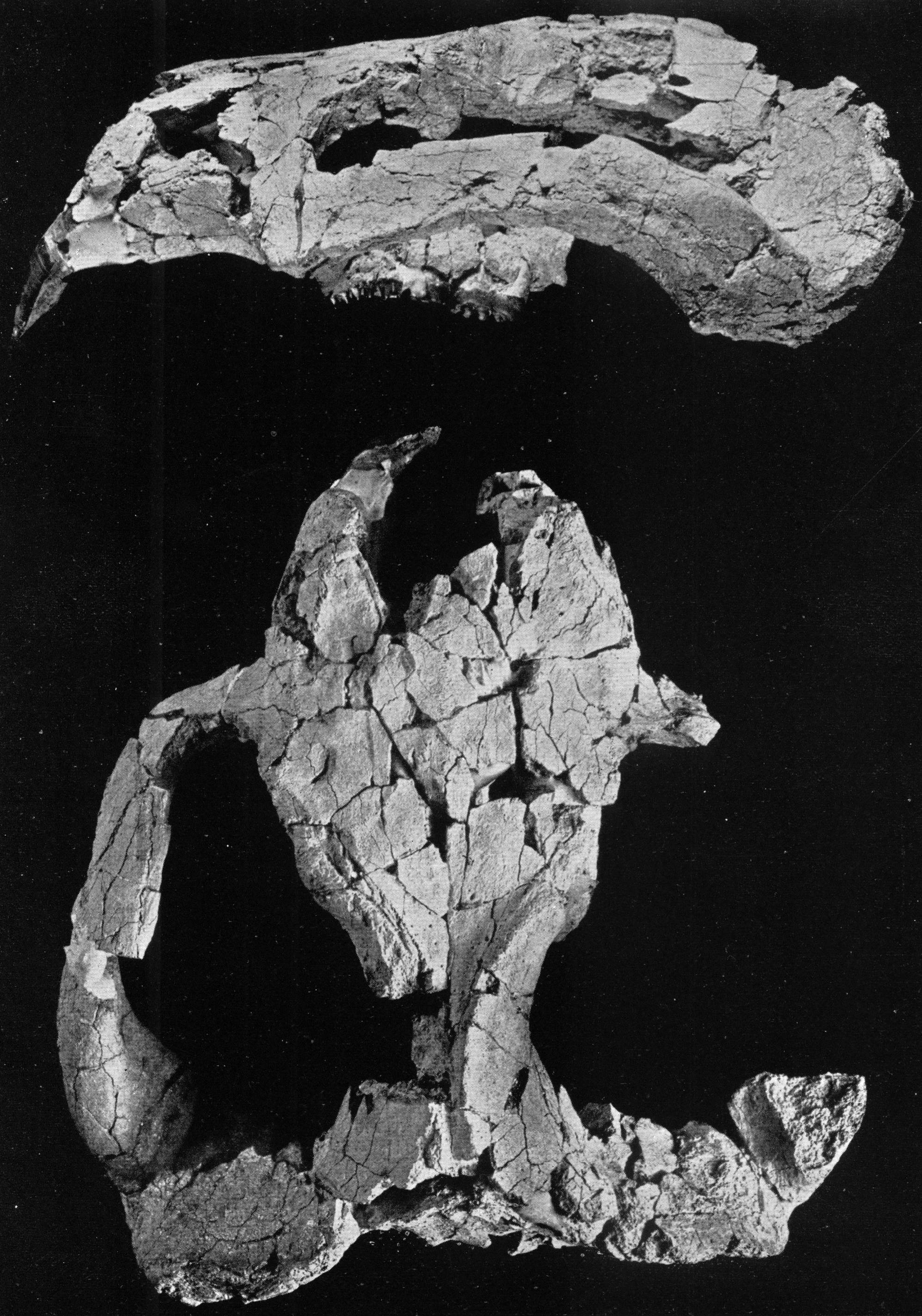- Taeniolabis
Taxobox
name = "Taeniolabis"
fossil_range =Paleocene

image_width = 250px
image_caption = "Taeniolabis taoensis" jaw and skull, Am. Mus. 16321.
regnum =Animal ia
phylum =Chordata
classis =Mammal ia
ordo =Multituberculata
superfamilia =Taeniolabidoidea
genus = "Taeniolabis"
subdivision_ranks = Species
subdivision =
* "T. lamberti"
* "T. taoensis""Taeniolabis" ("Ribbon Lips") is a
genus of extinctmammal from thePaleocene ofNorth America . It is the largest known member of the extinct orderMultituberculata , reaching weights of perhaps 30 kg. It is within the suborder ofCimolodonta and is a member of the superfamilyTaeniolabidoidea . The genus was named by Cope E.D. in 1882. Species have also been placed with the genera "Catopsalis " and "Polymastodon" Cope, 1882.The species "Taeniolabis lamberti" was named by Simmons N.B. in 1987. It has been found in the Puercan (Paleocene)-age Tullock Formation of
Montana . It's not quite as large as "T. taoensis", but still a hefty size for a multituberculate.The species "Taeniolabis taoensis" was named by Cope E.D. in 1882. It is also known as "Catopsalis pollux" (Cope, 1882); "Polymastodon attenuatus" (Cope, 1885); "P. latimolis" Cope, 1885; "P. selenodus" Osborn H.F. and Earle C., 1895; "P. taoensis" (Cope, 1882); "T. attetuatus"; "T. scalper" (Cope 1884); "T. sulcatus" (Cope 1882a); "T. triserialis" (Granger & Simpson, 1929). They are found in the Puercan-age Nacimiento Formation of
New Mexico andWyoming and in the Ravenscrag Formation ofSaskatchewan . This species had a 6 in. (16 cm) long skull. It was a real heavyweight; the largest known multituberculate, this creature was as big as a beaver.References
* Cope (1882), "A new genus of Taeniodonta". "
American Naturalist " XVI, p.604-605.
* Osborn and Earle (1895), "Fossil mammals of the Puerco beds." Collection of 1892. "Bull. Amer. Mus. Nat. Hist." VII, p.1-70, with 21 figs.
* Granger and Simpson (1929), "A revision of the Tertiary Multituberculata." "Bulletin Amer. Mus. Nat. Hist." 56, p.601-676, 43 figs.
* Simons N.B. (1986), "Taeniolabis" Cope, 1882 (Mammalia, Multituberculata): proposed designation of "Polymastodon taoensis" Cope, 1882 as type species." "Bulletin of Zoological Nomenclature" 43(3), p.310-311.
* Kielan-Jaworowska Z. and Hurum J.H. (2001), "Phylogeny and Systematics of multituberculate mammals". "Paleontology" 44, p.389-429.
* Cope (1882), "Mammalia in the Laramie Formation'." "American Naturalist" 16, p.830-831.
* Much of this information is derived from [http://home.arcor.de/ktdykes/taenio.htm] MESOZOIC MAMMALS;Eucosmodontidae ,Microcosmodontidae and Taeniolabidoidea, an Internet directory.
* Simmons (1987), "A revision of "Taeniolabis"(Mammalia: Multituberculata), with a new species from the Puercan of eastern Montana." "J. of Paleont." 61(4), p.794-808.
Wikimedia Foundation. 2010.
